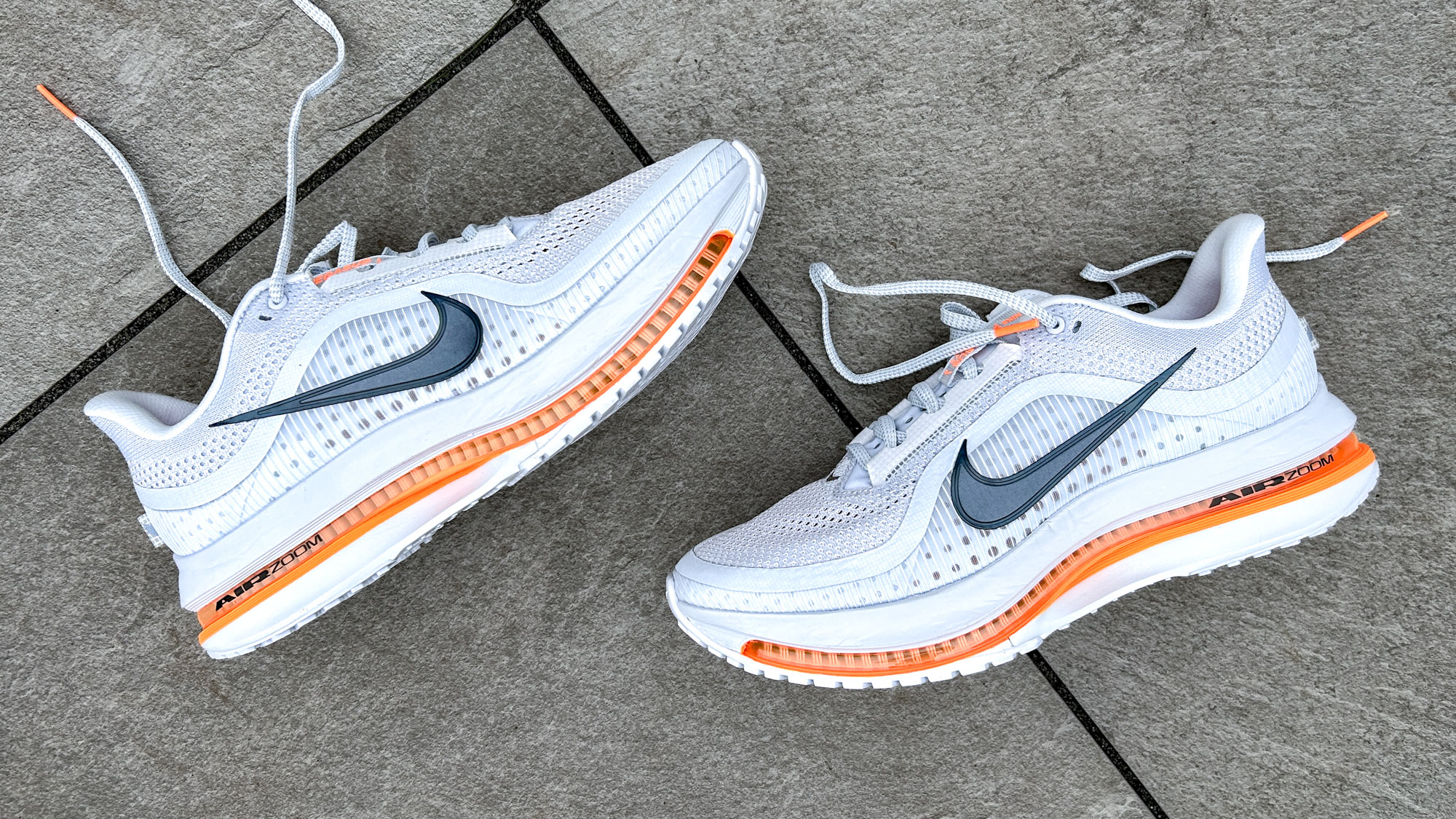
It’s the Nike Pegasus, but not as we know it. The Nike Pegasus Premium sits at the top of Nike’s Pegasus range and is a very different shoe to the Nike Pegasus 41 and Nike Pegasus Plus, mostly thanks to the wild midsole design that contains three different materials.
The high stack and combination of materials create a bouncy and enjoyable ride and the Pegasus Premium is the springiest Pegasus I’ve ever tested, but this bounce is undermined by the weight of the shoe, and it’s also quite unstable.
While it’s fun, and a great-looking shoe you can also wear casually, the Nike Pegasus Premium doesn’t match the performance of the best running shoes. In my Nike Pegasus Premium review I’ll explain why and compare it to the best Nike running shoes and alternatives I’ve tested from other brands.
Nike Pegasus Premium review: price and availability
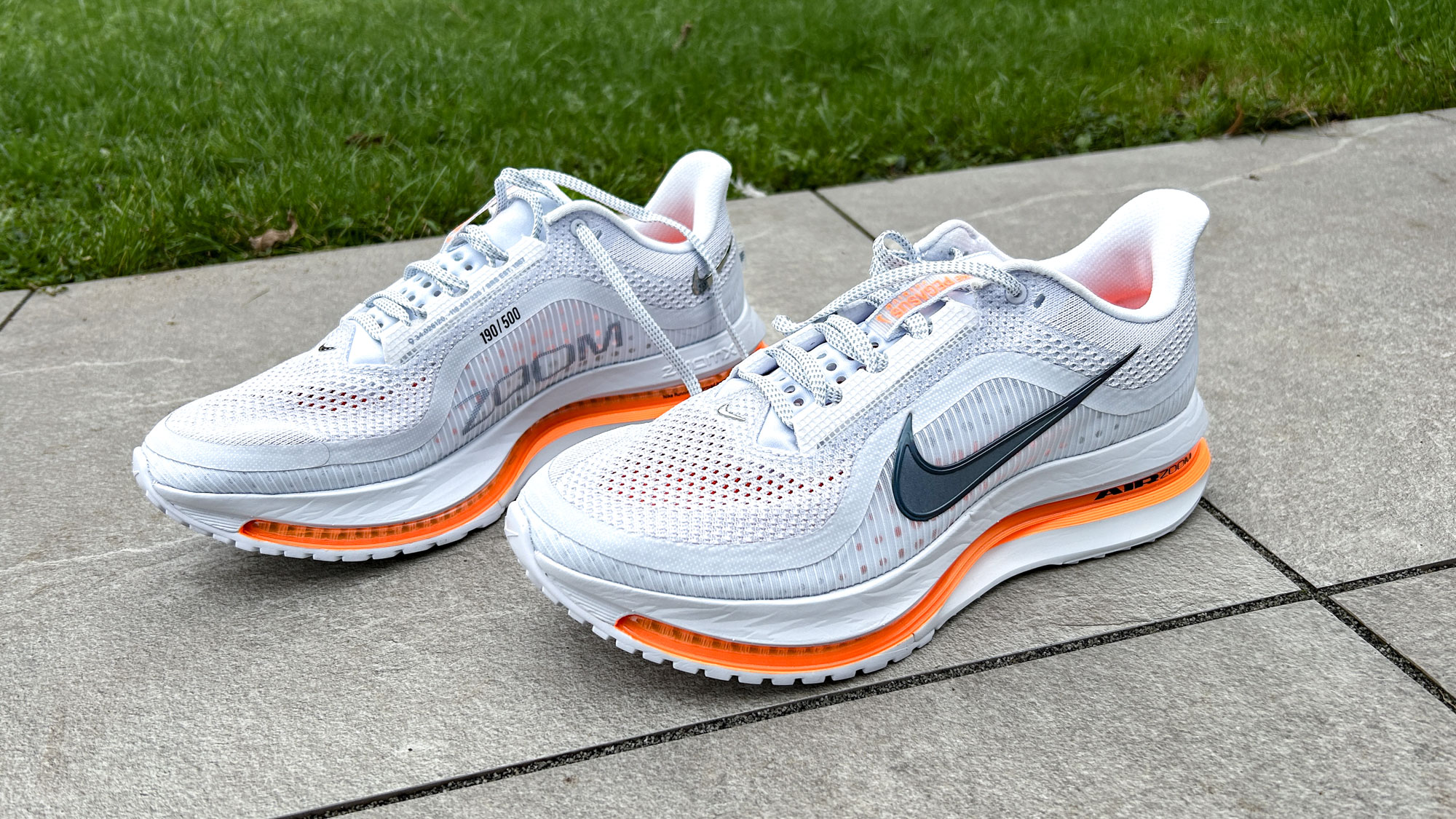
The Nike Pegasus Premium is due to go on sale on 30 January 2025 and will cost $210 in the U.S. and £185 in the U.K., making it considerably more expensive than the other Pegasus shoes in Nike’s range. The price is in line with top max-cushioned shoes like the Asics Superblast 2 and Hoka Skyward X.
Nike Pegasus Premium review: design and fit
The Nike Pegasus Premium will launch in the ‘Airscape’ color I tested, with other colors sure to follow. The shoe has a very high midsole stack of 45mm at the heel and 35mm at the forefoot, keeping the same 10mm drop that you have on the Pegasus 41 and Pegasus Plus.
I found that the shoe fit me well in my normal running shoe size, which is the same size I use for the other Pegasus shoes and have done with all Nike shoes for years. Given the high stack on the Pegasus Premium it isn’t a surprise that it’s a heavy shoe — at 11.6oz in a men’s size 10 it’s over an ounce heavier than the Pegasus 41, and 2.5oz heavier than the Pegasus Plus in my size.
Upper
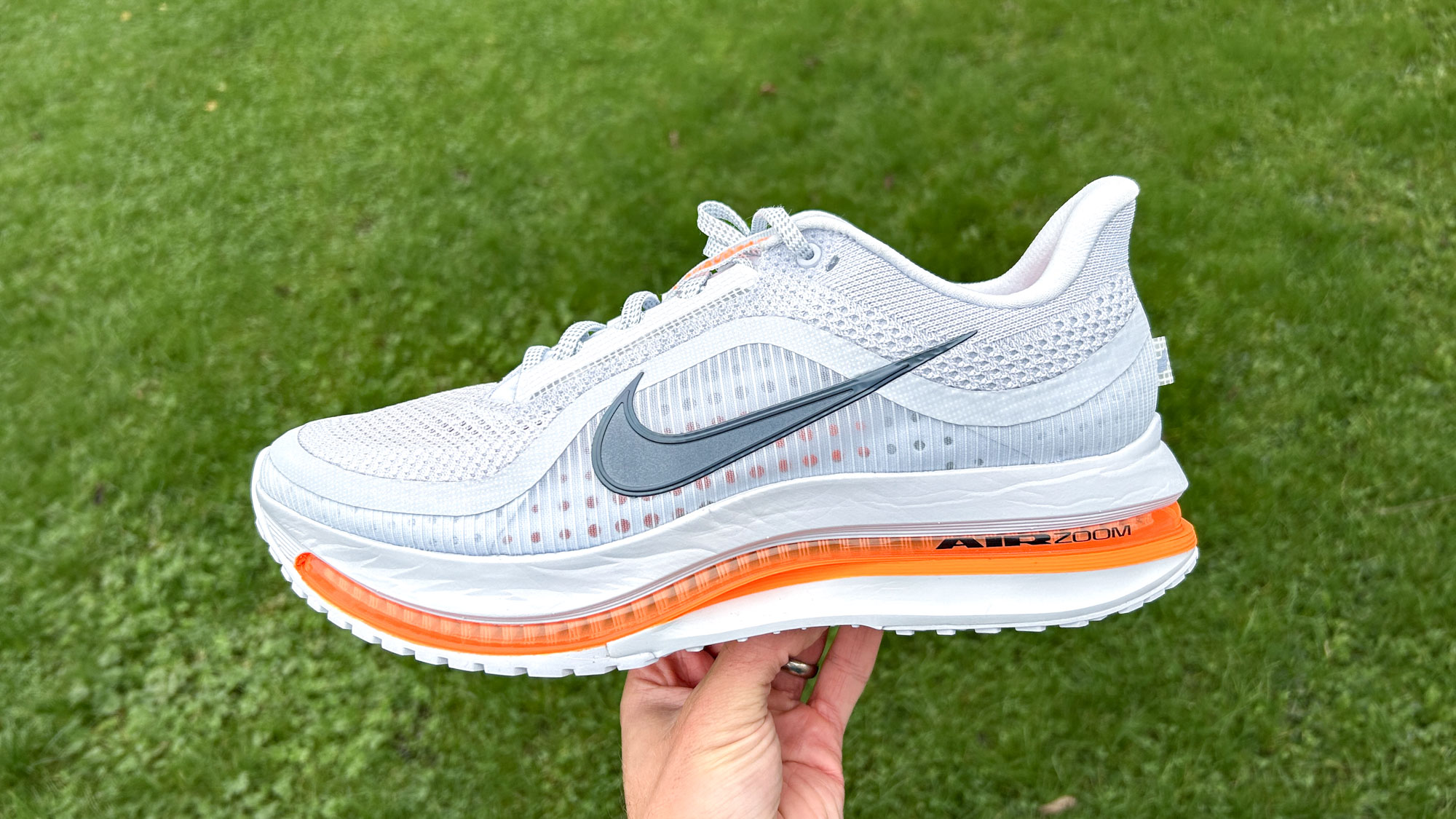
The Pegasus Premium has an engineered mesh upper with plenty of padding around the collar. The tongue is also well padded, which increases the step-in comfort of the shoe but might make it feel a little hot if running in warm conditions. It was breathable enough for my use in the UK winter though, and overall I found the upper comfortable throughout my testing, with no rubbing or hot spots.
Midsole
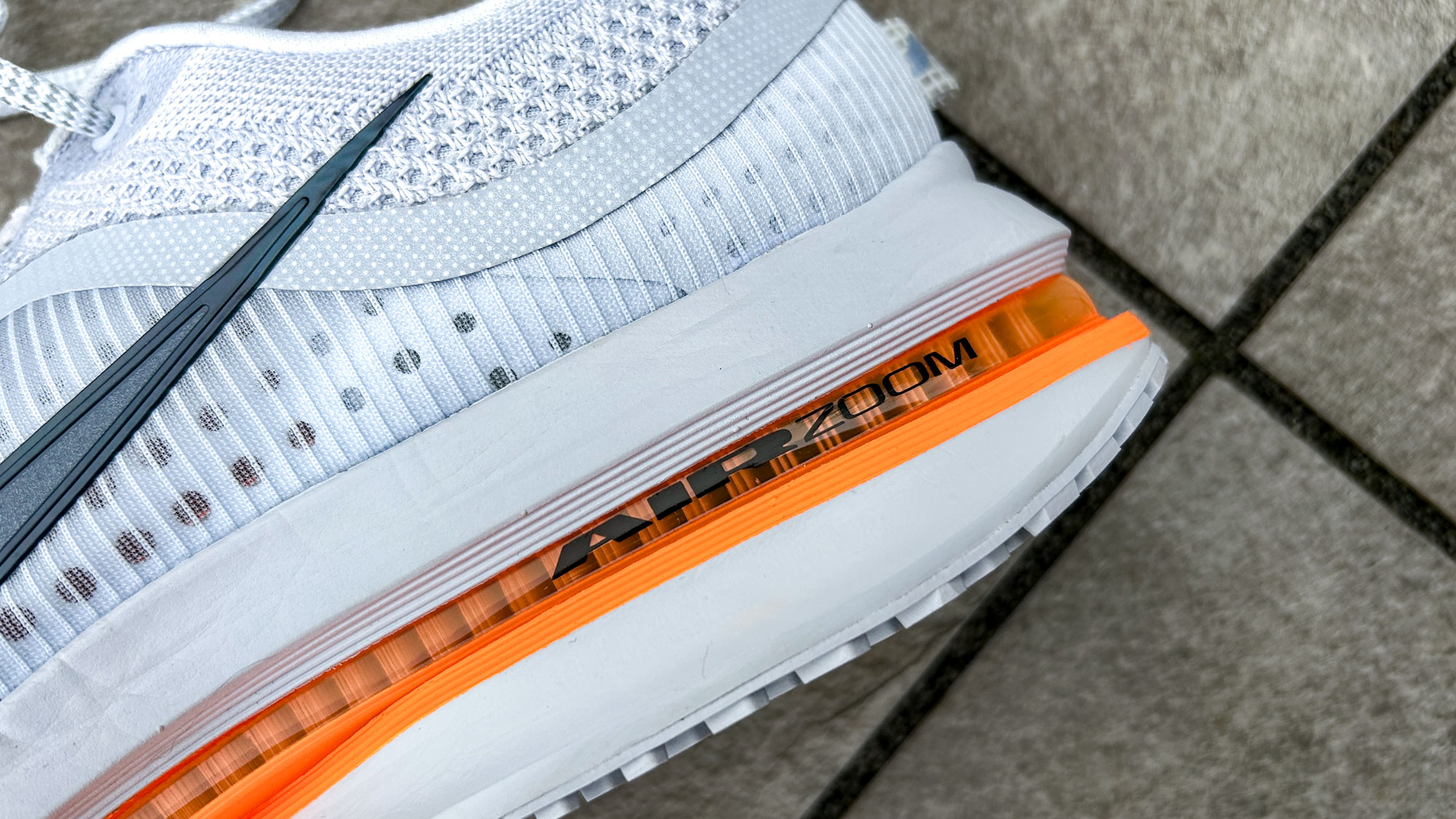
Nike has thrown everything at the midsole of the Pegasus Premium, which contains three different materials. The top layer is ZoomX foam, which is the springy, lightweight material used in the Nike Alphafly 3 and Vaporfly 3 racing shoes.
Then you have a full-length Air Zoom unit, which is the main innovation in the Pegasus Premium. Nike has used Air Zoom pods in other running shoes for years, but this is the first time a full-length unit has been put into a shoe, and it delivers a highly-responsive ride feel with the Pegasus Premium.
Underneath the Air Zoom unit there is a layer of ReactX foam running from the heel to the midfoot of the Pegasus Premium. This is likely there to protect the softer foams above and add some more stability to the shoe, which is needed because the high stack and narrow midfoot on the Pegasus Premium does compromise its stability.
Outsole
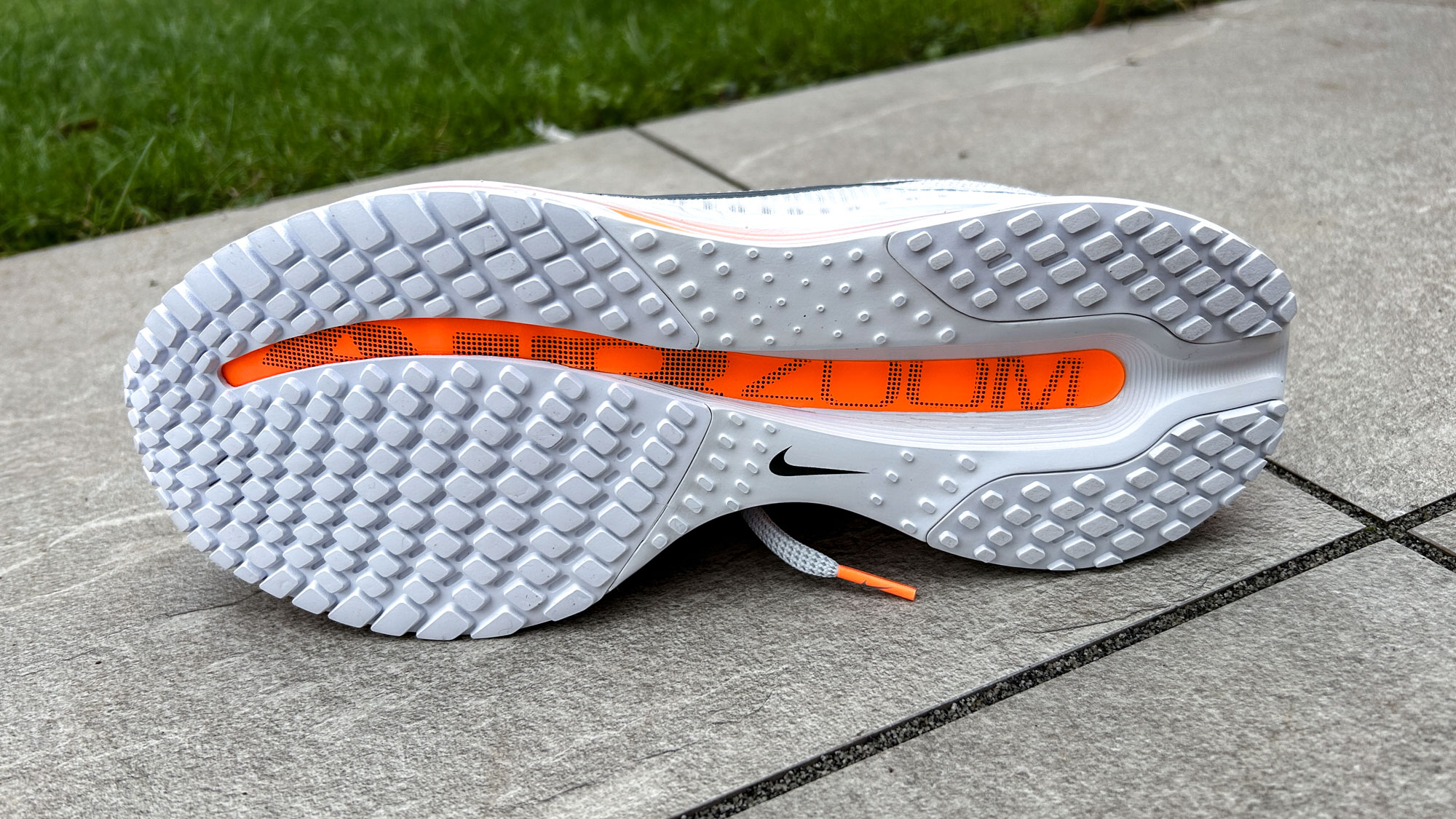
There is a long cutout on the bottom of the Pegasus Premium which shows off the Air Zoom unit, but the key impact zones on the shoe are covered with a layer of rubber. During my runs in wet conditions the shoe has gripped well, and I don’t expect any problems with the outsole’s durability.
Nike Pegasus Premium review: running performance
I’ve tested all three Nike Pegasus shoes in the current line-up and the Pegasus Plus is a natural step up on the Pegasus 41, with a similar design but a better foam in the midsole that makes it lighter and more responsive.
The Nike Pegasus Premium is, however, something very different to the other two shoes in the Pegasus stable. It’s more akin to max-stack cruisers from other brands like the Hoka Skyward X or Brooks Glycerin Max, and offers a fun and bouncy ride that adds enjoyment to easy runs.
It’s certainly the springiest Nike Pegasus shoe I’ve tried, and it has a lot more foam underfoot than the Pegasus 41 and Pegasus Plus. This is especially noticeable under the forefoot on the run. The Pegasus 41 and Plus sometimes felt a bit flat to me there, and aren’t as comfortable as shoes from other brands with lower drops and higher forefoot stacks, but there’s certainly no lack of comfort with the Pegasus Premium.
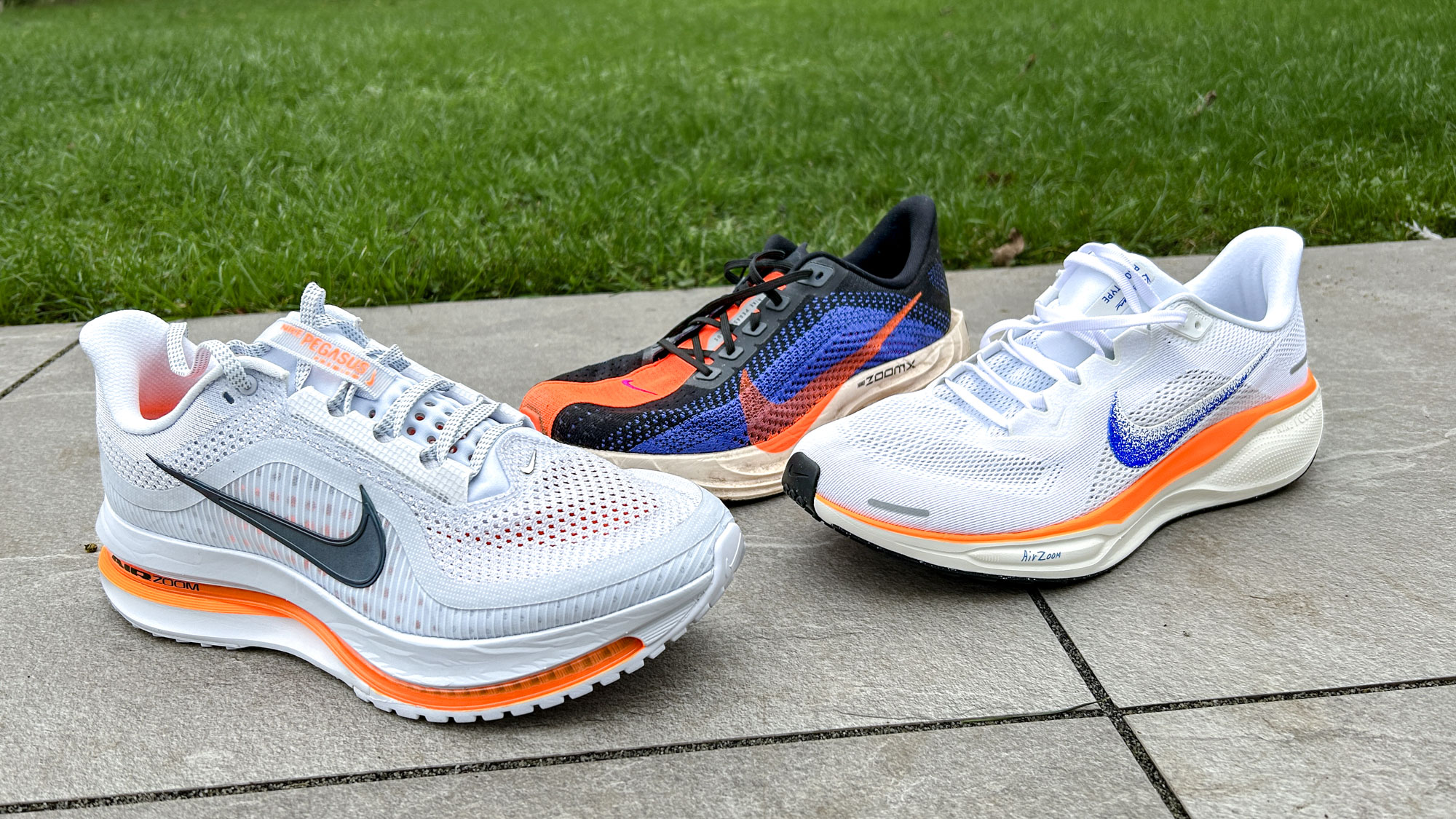
All that foam underfoot does come with two considerable drawbacks though. The first is the weight. Even for a high stack shoe, the Pegasus Premium is heavy — it’s much heavier than the Asics Superblast 2, and also weightier than the Hoka Skyward X and Brooks Glycerin X, and this makes it harder to enjoy faster runs in the Pegasus Premium.
Also, most high-stack cushioned shoes I’ve tested have a wide base to make them more stable, including the Hoka and Brooks shoes mentioned above, but this isn’t the case with the Pegasus Premium. It has a narrow pinch-point at the midfoot and I don’t think it’s a stable shoe — even as a neutral runner I could feel my foot rolling inwards sometimes.
If Nike had made the shoe wider it would have been even heavier, so the Pegasus Premium might be stuck between a rock and hard place on that front. If you’re a neutral runner and running on flat surfaces then the instability shouldn’t be a problem, but if you need any extra support then I’d probably avoid the Pegasus Premium.
Should you buy the Nike Pegasus Premium?
While the Nike Pegasus Premium is a fun shoe and I’m interested to see where Nike takes the Air Zoom tech in its midsole next, it’s not one I recommend to most runners. The combination of the high price, heavy design and instability mean that there are better options available, so unless you really love the look of the shoe and want to use it for general use as well as running, I’d look elsewhere.
The Asics Superblast 2 is the most versatile max-stack shoe I’ve tried, and brilliant for easy, hard, short and long runs alike, while the Hoka Skyward X offers a bouncy, enjoyable ride for easy runs while being more stable than the Nike Pegasus Premium.
Within Nike’s own range the Pegasus Plus is a more versatile daily trainer, if less comfortable, while the Nike Zoom Fly 6 is a fantastic plated super-trainer I love doing all types of run in. The standard Pegasus 41 is a better option for new runners thanks to its stable and protective design, and relatively low price.







